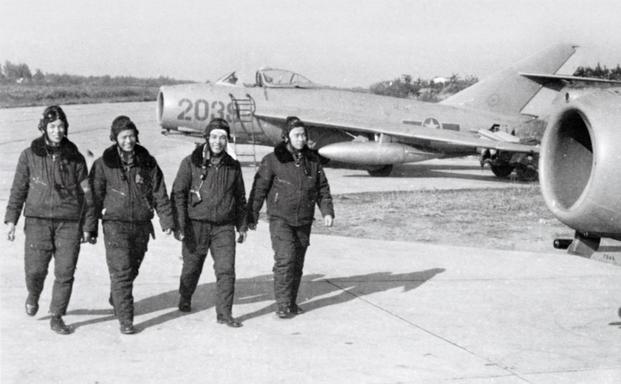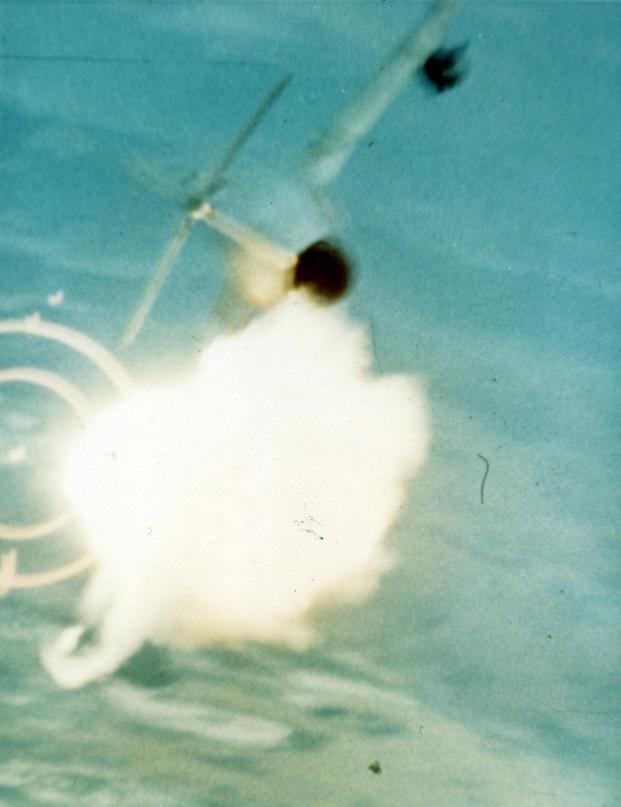American airpower was supposed to be untouchable in Vietnam. Instead, U.S. pilots found themselves struggling against smaller, more agile MiGs and losing more often than anyone expected. The decline in America’s air-to-air kill ratio revealed weaknesses that would change how the U.S. fought in the skies.
The U.S. lost over 2,000 fixed-wing aircraft during the war. Unlike World War II and Korea, where American aviators boasted an 8-to-1 kill-to-loss ratio, Vietnam saw that number fall; sometimes reported at less than 1-to-1.
So, what went wrong?
Poor Training of American Pilots
The Korean War’s impressive 8-to-1 kill ratio was earned by aviators who were overwhelmingly World War II veterans. But by the mid-1960s, many of those men had retired. The few who remained faced the impossible task of preparing a new generation to fight with unproven jets, unreliable missiles and restrictive rules of engagement. Dogfighting was even seen as a skill of the past.
Fighter-pilot schools like the Navy’s Top Gun did not exist yet. Planes like the F-4 Phantom and F-105 Thunderchief were still relatively untested in combat. The first pilots to fly them over Vietnam were essentially field-testing their aircraft in real fights, while North Vietnamese MiG-17, MiG-19 and MiG-21 pilots had years of experience and Soviet training behind them.
Early U.S. training also emphasized safety over realism, negating the ability for pilots to train under simulated battle conditions. Pilots also sparred against other F-4s instead of aircraft that could replicate MiGs. It took years before training programs introduced T-38s and F-5Es to simulate enemy planes.
Technological Disadvantages Against the North Vietnamese
The Phantom, America’s primary fighter, was powerful but flawed. It had poor visibility to the sides and rear, left a smoke trail without afterburners, and couldn’t match the tight-turning MiGs.
Its biggest shortfall? No gun. Designed as a Cold War interceptor meant to down Soviet bombers at long range, the F-4 relied entirely on missiles. Early air-to-air missiles were unreliable, with kill rates as low as 8 to 10 percent. Once a Phantom ran dry, it was virtually defenseless.
These issues meant that American aviators only had an edge while ambushing unsuspecting fighters, and if their missiles missed, things went sideways. MiG pilots had no such handicap — they carried cannons that could shred American fighters up close.
Other U.S. aircraft, like the F-105, may have been armed with a cannon, but were primarily used as bombers and struggled to go toe-to-toe with MiGs.
Underestimating the Enemy
Many U.S. pilots initially expected an easy fight against a “third-rate” air force. Instead, they ran into disciplined, Soviet-trained aviators who had been flying combat missions since the late 1940s.
The North Vietnamese also had strategic advantages as downed MiG pilots could often return to duty quickly. American pilots shot down over the North were usually captured or killed. MiG pilots also relied on early ground radar that allowed them to intercept American planes solely under ideal circumstances.
On top of that, U.S. aviators rotated home after one year or 100 missions. Their opponents stayed in the fight for the entire war, creating a stable core of North Vietnamese aces. The constant churn of inexperienced American pilots gave their adversaries a decisive edge.
Despite never fielding more than 70 combat-ready jets at a time, North Vietnam inflicted staggering losses. Nearly 40 percent of all U.S. F-4 Phantoms built were lost in the war.

North Vietnamese Missile Threats
If American planners overestimated their own missiles, they underestimated the enemy’s. Soviet-supplied surface-to-air missiles (SAMs) wreaked havoc on U.S. planes.
North Vietnam received hundreds of SA-2 Guideline missiles, guided by radar, which tracked incoming aircraft and scored hundreds of kills.
American rules of engagement even prevented strikes on SAM batteries in populated areas, leaving pilots vulnerable to attacks they couldn’t easily counter.
Tactical Inflexibility in the U.S. Military
The U.S. military prizes individual initiative, but its air campaigns in Vietnam often boxed aviators into rigid flight lanes and predictable patterns. North Vietnamese pilots learned these flight paths and often slipped behind U.S. formations with devastating results.
Another issue for American pilots was their strict rules of engagement which required visual confirmation of enemy aircraft before firing. This gave enemy pilots time to spot and react to U.S. planes.
Meanwhile, interservice rivalry hampered progress. The Navy eventually adopted more flexible formations and flight paths. While both services began using the new AIM-9 Sidewinder missile, each had differing opinions on the weapon.
The Navy eventually founded the Top Gun school to improve training, but only for naval aviators. Air Force pilots would not pursue new tactics until the final years of the war.

What Counts as a Fighter?
Finally, the statistics themselves are misleading. America’s Korea-era 8-to-1 ratio counted only F-86 Sabre engagements on combat-air-patrol missions. In Vietnam, the numbers are different.
Losses of RF-101 reconnaissance planes, A-1 Skyraiders, EB-66 recon bombers, RC-47 transports and even HH-53 rescue helicopters all factored into the math. Meanwhile, communist pilots happily claimed these downed aircraft as victories.
When looking strictly at engagements during air-superiority missions, the picture changes. In 269 documented fighter-to-fighter battles, the U.S. Air Force fought 201 and the Navy 68. The Air Force lost 64 aircraft and the Navy 12, compared to around 193 enemy fighters shot down.
Initially, the Air Force managed only a 5.5-to-1 kill ratio, while the Navy claimed 6.4-to-1. But by 1973, improvements in training, missile technology and tactics pushed those numbers to 15-to-1 for the Air Force and 8.7-to-1 for the Navy.
The so-called “1-to-1 ratio” has been repeated for decades, but it’s a myth. That figure includes everything from lost bombers to recon planes and even rescue helicopters. When it comes to fighter engagements, U.S. pilots were far more lethal than the numbers suggest.

Lessons Learned and American Airpower Today
While American pilots did not perform as poorly as commonly thought, the experience reshaped U.S. airpower. Out of those hard lessons came AWACS, stealth technology, onboard sensors, more reliable weapons and better pilot training. Top Gun itself became legendary, shaping generations of naval aviators.
By the Gulf War, American planes dominated the skies, scoring 33 air-to-air kills with only one confirmed loss in return. Dogfights may or may not define the next major war, but the painful lessons of Vietnam still guide how America fights in the air today.
Story Continues
Read the full article here



